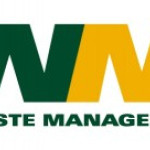- Industry: Environment
- Number of terms: 834
- Number of blossaries: 0
- Company Profile:
Waste Management, Inc. provides integrated waste management services in North America. The company offers collection, transfer, recycling, disposal, and waste-to-energy services. Its recycling operations include collection and materials processing, plastics materials recycling, and commodities ...
Regular garbage from non-industrial sources, such as residential homes, restaurants, retail centers, and office buildings. Typical MSW includes paper, discarded food items, and other general discards. Green waste is considered MSW and includes yard clippings, leaves, trees, etc.
Industry:Environment
These are facilities that consist of large incinerator-type operations where trash is incinerated (burned). The heat from this combustion process is converted into high-pressure steam, which can be used to generate electricity for sale to public utility companies under long-term contracts. The residue from the incineration process is disposed of in a Landfill.
Industry:Environment
This is a facility where recyclable materials are separated, sorted and processed for sale. This process includes separating recyclable materials (manually or by machine) according to type, and baling or otherwise preparing the separated material for sale. Operating costs and revenues for MRF's are accounted for as a separate line of business.
Industry:Environment
Wastes that exhibit certain characteristics may be regulated by RCRA. A waste may be considered hazardous if it is ignitable (i.e., burns readily), corrosive, or reactive (e.g., explosive). Waste may also be considered hazardous if it contains certain amounts of toxic chemicals. In addition to these characteristic wastes, EPA has also developed a list of over 500 specific hazardous wastes. Hazardous waste takes many physical forms and may be solid, semi-solid, or even liquid. A hazardous waste landfill is built to specific regulations to allow for the disposal of waste designated by regulatory agencies as being hazardous. These regulations are far more stringent that for an MSW landfill. WM has 5 secure hazardous waste landfills permitted under RCRA. These sites all operate under the name "chemical waste management" (CWM).
Industry:Environment
This is the process of placing the final cover material on the landfill.
Industry:Environment
The period of time after a landfill has reached its permitted capacity but before it has received certification of closure from a state regulatory agency. During the closure period, certain activities must be performed to comply with environmental and other regulations (e.g. capping, landscaping, etc.)
Industry:Environment
A landfill that has reached its permitted waste capacity and has been permanently capped and certified as closed by the appropriate state regulatory agency.
Industry:Environment
The material used to cover the working face of a landfill at the close of each day.
Industry:Environment
The Environmental Protection Agency (EPA) defines a brownfield as an “abandoned, idled, or under-used industrial and commercial facility where expansion or redevelopment is complicated by real or perceived environmental contamination.” Waste Management has worked with states, communities and other economic development stakeholders to pursue a number of brownfield development projects across the U.S.
Industry:Environment
Landfills are constructed in phases (cells) that adjoin one another, separated by a berm to contain leachate within an area. The entire permitted area will be divided into separate cells for construction.
Industry:Environment
